Japan conducts first missile test on its own territory as part of military buildup to deter China
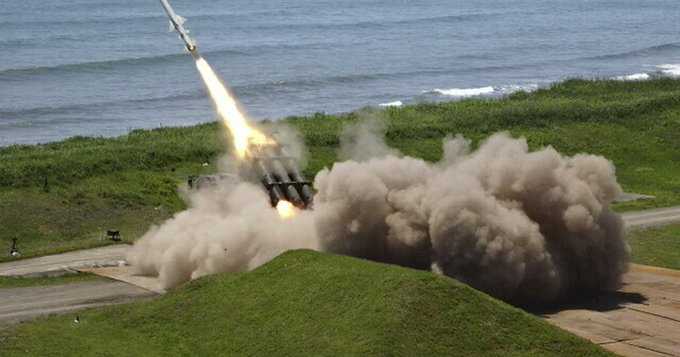
Japan conducts first missile test on its own territory as part of military buildup to deter China

View 195 times
#BREAKING U.S. strikes only set back Iran’s nuclear program by months: AP sources.
The intelligence report issued by the Defense Intelligence Agency on Monday contradicts statements from Trump and Israeli Prime Minister Benjamin Netanyahu about the status of Iran’s nuclear facilities. The people were not authorized to address the matter publicly and spoke on condition of anonymity.
According to the people, the report found that while the Saturday strikes at the Fordo, Natanz and Isfahan nuclear sites did significant damage, they were not totally destroyed.
The assessment found that at least some of Iran’s highly enriched uranium was moved out of multiple sites before the U.S. strikes and survived, according to the people, and it also found that Iran’s centrifuges are largely intact.
At the deeply buried Fordo uranium enrichment plant, the entrance collapsed and infrastructure was damaged, so that will take time to fix, but the underground infrastructure was not destroyed, according to one of the people. The person also said that previous assessments had warned of this outcome at Fordo.
The White House strongly pushed back on the assessment, calling it “flat-out wrong.”
“The leaking of this alleged assessment is a clear attempt to demean President Trump, and discredit the brave fighter pilots who conducted a perfectly executed mission to obliterate Iran’s nuclear program,” White House press secretary Karoline Leavitt said in a statement. “Everyone knows what happens when you drop fourteen 30,000 pound bombs perfectly on their targets: total obliteration.”
Trump has said in comments and posts on social media in recent days, including Tuesday, that the strikes left the sites in Iran “totally destroyed” and that Iran will never rebuild its nuclear facilities.
Netanyahu said in a televised statement on Tuesday that, “For dozens of years I promised you that Iran would not have nuclear weapons and indeed ... we brought to ruin Iran’s nuclear program.”
He said the U.S. joining Israel was “historic” and thanked Trump.
The CIA and the Office of the Director of National Intelligence declined to comment on the DIA assessment. ODNI coordinates the work of the nation’s 18 intelligence agencies, including the DIA, which is the intelligence arm of the Defense Department, responsible for producing intelligence on foreign militaries and the capabilities of adversaries.
Michelle L. Price And Mary Clare Jalonick, The Associated Press
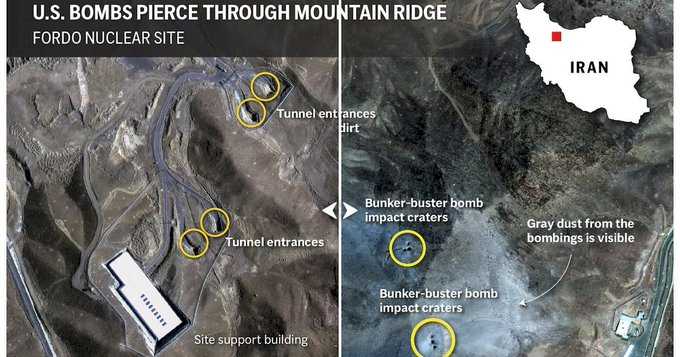
View 199 times
#Alberta Next panel announced with legislature members, academics and business leaders, She says Ottawa is to blame for decades of lost investment and resource revenue and that Alberta can’t be held back any longer.
The premier is to lead the Alberta Next panel, which also includes three United Conservative Party legislature members, Environment Minister Rebecca Schulz, a retired judge and a physician.
Smith says following a summer of town halls across the province, the panel is to recommend ideas and policy proposals that would be put to Albertans in a referendum next year.
Smith has said a referendum on Alberta separation could happen, though she wouldn’t initiate one herself.
Opposition NDP Leader Naheed Nenshi says the premier is wasting time and money by rehashing former premier Jason Kenney’s Fair Deal panel, which toured the province six years ago in search of ways Alberta could gain leverage over Ottawa.
This report by The Canadian Press was first published June 24, 2025.
— With files from Jack Farrell in Edmonton

View 198 times
TEL AVIV, June 24. At least three people were killed when a missile launched from Iranian territory struck a seven-story building in the Israeli city of Be’er Sheva, according to a report by Israel’s N12 television channel.
The broadcaster also noted that several other individuals sustained injuries in the attack.
According to N12, rescue operations are currently underway at the site, as authorities search for people possibly trapped beneath the rubble. There are also concerns regarding a potential gas leak in the aftermath of the strike.
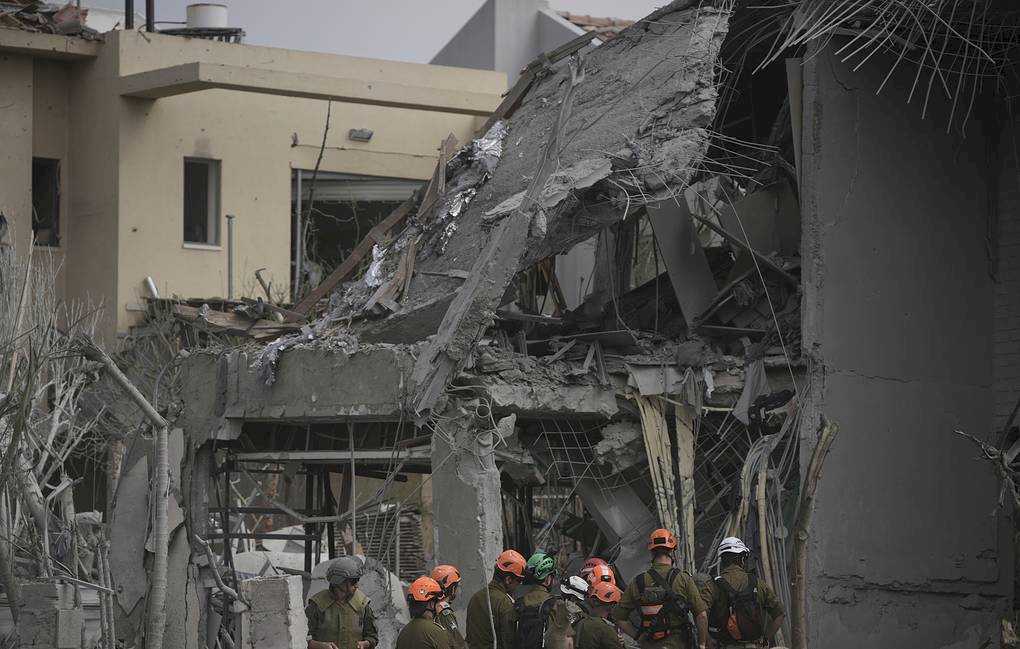
View 200 times
Iran could ‘target’ U.S. officials if Tehran believes regime’s survival at risk, DHS says.
Other scenarios for potential Iranian targeting of U.S. officials include if Tehran considers them to be involved in the deaths of senior Iranian leaders or believes U.S. airstrikes will continue, according to the bulletin from DHS’ Office of Intelligence and Analysis, which was sent to state and local law enforcement and is dated June 22.
CNN has requested comment from the Iranian government’s mission to the United Nations.
On Monday, Iran fired missiles towards a U.S. military base in Qatar in retaliation for the U.S. strikes on Iran, according to two officials familiar with the matter.
But the DHS bulletin is one of the clearest connections yet drawn by U.S. intelligence and law enforcement analysis about the potential violent backlash against civilian government officials for President Donald Trump’s decision to bomb Iranian nuclear sites.
“It is our duty to keep the nation safe and informed, especially during times of conflict,” Homeland Security Secretary Kristi Noem said in a statement to CNN when CNN asked DHS for comment on the bulletin. “The ongoing Israel-Iran conflict brings the possibility of increased threat to the homeland in the form of possible cyberattacks, acts of violence, and antisemitic hate crimes.”
The bulletin does not specify what the “targeting” of U.S. officials might look like but the Justice Department has previously alleged that Iran has tried to kill Trump and his former national security adviser, John Bolton, in retaliation for a 2020 U.S. military strike that killed senior Iranian general Qasem Soleimani.
“We have not yet observed Tehran threaten this kind of retaliatory action in response to the U.S. airstrikes, and recent law enforcement action could challenge Iran’s ability to execute a plot against U.S. officials in the short-term,” the bulletin said.
Trump raised the topic of regime change in Iran in a social media post on Sunday evening.
“It’s not politically correct to use the term, ‘Regime Change,’ but if the current Iranian Regime is unable to MAKE IRAN GREAT AGAIN, why wouldn’t there be a Regime change??? MIGA!!!” Trump wrote.
White House press secretary Karoline Leavitt on Monday said that Trump was “simply raising a question” when he brought up the topic.
CNN reported last year that intelligence about a threat from Iran to Trump led the Secret Service to step up security around the then-presidential candidate. Ultimately, those protections did not prevent a security lapse that allowed a 20-year-old lone gunman unaffiliated with Iran to nearly kill Trump at a July 2024 rally in Pennsylvania.
Several top former Trump aides who continued to have security details due to the threat from Iran have since faced retribution from their former boss and had those details pulled. In the years since the U.S. killing of Soleimani, multiple former Trump administration officials have beefed up their personal security details.
The new DHS bulletin, labeled “For Official Use Only,” adds more context to the department’s public warning on Sunday of a “heightened threat environment” in the U.S., citing the possibility of “low-level cyberattacks” and continued potential of lone-wolf attacks.
Days before the U.S. strikes on Iran, law enforcement officials told CNN that they were reexamining known or suspected Hezbollah associates in the US, looking for possible threats that could arise as tensions with Iran increase. There’s no indication of credible threats at this time, the sources said.
Iran’s security services often use hacking to gather intelligence on targets of assassination or surveillance, Iran-focused cybersecurity experts have told CNN. A former Trump official and onetime confidant of Bolton was hacked in 2022, in a possible effort to track Bolton’s movements as part of the assassination plot, CNN previously reported, not naming the ex-official.
“In the short-term, we are most concerned that Iran-aligned hacktivists will conduct low-level cyberattacks against U.S. networks, including distributed denial-of-service attacks,” the new DHS bulletin obtained by CNN said. “We are also concerned about cyber or physical attacks against critical infrastructure in the Homeland.”
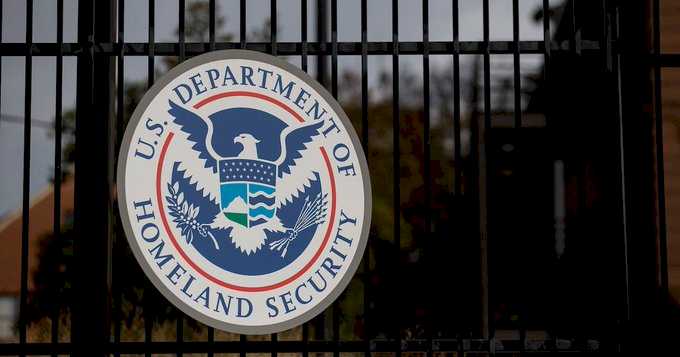
View 200 times
As it attacks Iran’s nuclear program, Israel maintains ambiguity about its own.
What’s not-so-secret is that for decades Israel has been believed to be the Middle East’s only nation with nuclear weapons, even though its leaders have refused to confirm or deny their existence.
Israel’s ambiguity has enabled it to bolster its deterrence against Iran and other enemies, experts say, without triggering a regional nuclear arms race or inviting preemptive attacks.
Israel is one of just five countries that aren’t party to a global nuclear nonproliferation treaty. That relieves it of international pressure to disarm, or even to allow inspectors to scrutinize its facilities.
Critics in Iran and elsewhere have accused Western countries of hypocrisy for keeping strict tabs on Iran’s nuclear program — which its leaders insist is only for peaceful purposes — while effectively giving Israel’s suspected arsenal a free pass.
On Sunday, the U.S. military struck three nuclear sites in Iran, inserting itself into Israel’s effort to destroy Iran’s program.
Here’s a closer look at Israel’s nuclear program:
A history of nuclear ambiguity
Israel opened its Negev Nuclear Research Center in the remote desert city of Dimona in 1958, under the country’s first leader, Prime Minister David Ben Gurion. He believed the tiny fledgling country surrounded by hostile neighbors needed nuclear deterrence as an extra measure of security. Some historians say they were meant to be used only in case of emergency, as a last resort.
After it opened, Israel kept the work at Dimona hidden for a decade, telling United States’ officials it was a textile factory, according to a 2022 article in the Bulletin of the Atomic Scientists, an academic journal.
Relying on plutonium produced at Dimona, Israel has had the ability to fire nuclear warheads since the early 1970s, according to that article, co-authored by Hans M. Kristensen, director of the Nuclear Information Project with the Federation of American Scientists, and Matt Korda, a researcher at the same organization.
Israel’s policy of ambiguity suffered a major setback in 1986, when Dimona’s activities were exposed by a former technician at the site, Mordechai Vanunu. He provided photographs and descriptions of the reactor to The Sunday Times of London.
Vanunu served 18 years in prison for treason, and is not allowed to meet with foreigners or leave the country.
Israel possesses dozens of nuclear warheads, experts say
Experts estimate Israel has between 80 and 200 nuclear warheads, although they say the lower end of that range is more likely.
Israel also has stockpiled as much as 1,110 kilograms (2,425 pounds) of plutonium, potentially enough to make 277 nuclear weapons, according to the Nuclear Threat Initiative, a global security organization. It has six submarines believed to be capable of launching nuclear cruise missiles, and ballistic missiles believed to be capable of launching a nuclear warhead up to 6,500 kilometers (4,000 miles), the organization says.
Germany has supplied all of the submarines to Israel, which are docked in the northern city of Haifa, according to the article by Kristensen and Korda.
Nuclear weapons in the Middle East pose risks
In the Middle East, where conflicts abound, governments are often unstable, and regional alliances are often shifting, nuclear proliferation is particularly dangerous, said Or Rabinowitz, a scholar at Jerusalem’s Hebrew University and a visiting associate professor at Stanford University.
“When nuclear armed states are at war, the world always takes notice because we don’t like it when nuclear arsenals ... are available for decision makers,” she said.
Rabinowitz says Israel’s military leaders could consider deploying a nuclear weapon if they found themselves facing an extreme threat, such as a weapon of mass destruction being used against them.
Three countries other than Israel have refused to sign the Treaty on the Non-Proliferation of Nuclear Weapons: India, Pakistan and South Sudan. North Korea has withdrawn. Iran has signed the treaty, but it was censured earlier this month, shortly before Israel launched its operation, by the U.N.’s nuclear watchdog — a day before Israel attacked — for violating its obligations.
Israel’s policy of ambiguity has helped it evade greater scrutiny, said Susie Snyder at the International Campaign to Abolish Nuclear Weapons, a group that works to promote adherence to the U.N. treaty.
Its policy has also shined a light on the failure of Western countries to rein in nuclear proliferation in the Middle East, she said.
They “prefer not to be reminded of their own complicity,” she said.
Sam Mednick, The Associated Press
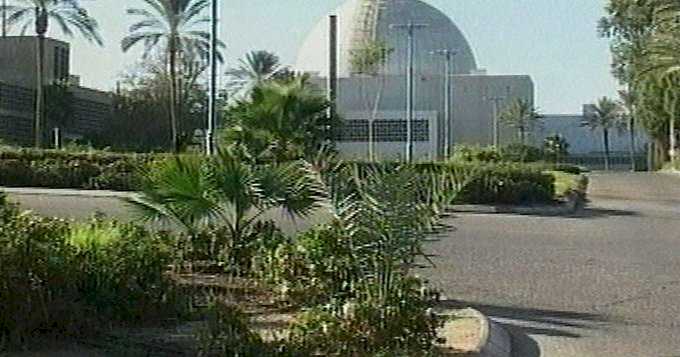
View 202 times
U.K. government says it will ban pro-Palestinian group after activists broke into military base

View 200 times
US military and intelligence officers have detected signs that Iran-backed groups are preparing to attack US bases in Iraq and, possibly, Syria, the New York Times (NYT) reported.
According to the newspaper, "so far the groups have held off, and Iraqi officials are working hard to dissuade militia action.".
View 201 times
How the U.S. #bombarded Iranian nuclear sites without detection.
U.S. pilots dropped 30,000-pound bombs early Sunday on two key underground uranium enrichment plants in Iran, delivering what American military leaders believe is a knockout blow to a nuclear program that Israel views as an existential threat and has been pummeling for more than a week. American sailors bolstered the surprise mission by firing dozens of cruise missiles from a submarine toward at least one other site.
Dubbed Operation Midnight Hammer, U.S. officials say the plan was characterized by a “precision strike” that “devastated the Iranian nuclear program,” even as they acknowledged an assessment was ongoing. For its part, Iran denied that any significant damage had been done, and the Islamic Republic pledged to retaliate.
Taking off from the U.S. heartland, B-2 stealth bombers delivered a total of 420,000 pounds of explosives, aided by an armada of refueling tankers and fighter jets — some of which launched their own weapons. U.S. officials said Iran neither detected the inbound fusillade, nor mustered a shot at the stealthy American jets.
The operation relied on a series of deceptive tactics and decoys to maintain the secrecy, U.S. officials said hours after the attack, which was preceded by nine days of Israeli attacks that debilitated Iran’s military leadership and air defenses.
A decoy plan
Even before the planes took off, elements of misdirection were already in play. After setting parts of the plan in motion, Trump publicly announced Thursday that he’d make a decision within two weeks on whether to strike Iran — ostensibly to allow additional time for negotiations, but in actuality masking the impending attack.
One group of B-2 stealth bombers traveled west from Missouri on Saturday as decoys, drawing the attention of amateur plane spotters, government officials and some media as they headed toward a U.S. air base in the Pacific. At the same time, seven other B-2s carrying two “bunker buster” bombs apiece flew eastward, keeping communications to a minimum so as not to draw any attention.
Air Force Gen. Dan Caine, the chairman of the Joint Chiefs of Staff, said at Sunday’s briefing that it was all “part of a plan to maintain tactical surprise” and that only “an extremely small number of planners and key leaders” knew about it in Washington and Florida, where U.S. Central Command is based.
After 18 hours of furtive flying that required aerial refueling, the armed B-2 Spirit bombers, each with two crew members, arrived on time and without detection in the Eastern Mediterranean, from where they launched their attack runs. Before crossing into Iran, the B-2s were escorted by stealthy U.S. fighter jets and reconnaissance aircraft.
A graphic released by the Pentagon showed the flight route as passing over Lebanon, Syria and Iraq. It was unclear whether those countries were notified of the U.S. overflight in advance. Most U.S. lawmakers were also kept in the dark, with some Republicans saying they were provided a brief heads-up by the White House before the strike.
“Our B-2s went in and out and back without the world knowing at all,” Secretary of Defense Pete Hegseth told reporters Sunday.
A multifaceted attack
About an hour before the B-2s entered Iran, Caine said that a U.S. submarine in the region launched more than two dozen Tomahawk cruise missiles against key targets, including a site in Isfahan where uranium is prepared for enrichment.
As the U.S. bombers approached their targets, they watched out for Iranian fighter jets and surface-to-air missiles, but encountered none.
At 6:40 p.m. in Washington and 2:10 a.m. in Tehran, the first B-2 bomber dropped its pair of GBU-57 massive ordnance penetrators on the deeply buried Fordo uranium enrichment plant. It was the first time these so-called “bunker busters” had ever been used in combat. Each 30,000-pound bomb is designed to burrow into the ground before detonating a massive warhead.
The Fordo site received the bulk of the bombardment, though a couple of the enormous bombs were also dropped on a uranium enrichment site at Natanz.
The U.S. bombs fell for about half an hour, with cruise missiles fired from submarines being the last American weapons to hit their targets, which included a third nuclear site at Isfahan, Caine said.
Both #Iran and the U.N. nuclear watchdog said there were no immediate signs of radioactive contamination around the sites.
A look at the numbers
The mission included:
— 75 precision-guided weapons: these included 14 GBU-57 “bunker buster” bombs deployed by the seven B-2 Spirit stealth bombers, and more than two-dozen Tomahawk cruise missiles launched from a U.S. submarine.
— 125 aircraft, including the B-2 bombers, fighter jets and refueling planes.
A female pilot
Hegseth said Sunday that “our boys in those bombers are on their way home right now.”
But a U.S. official said one woman was among those piloting the B-2 bombers. The official spoke on the condition of anonymity because they were not authorized to speak about the mission publicly.
A bit of history
Caine said the use of the bunker-buster bombs made the mission historic, as did other elements.
“This was the largest B-2 operational strike in U.S. history, and the second longest B-2 mission ever flown, exceeded only by those in the days following 9/11,” he told reporters Sunday.
Lolita C. Baldor in Narragansett, Rhode Island and Nicholas Ingram in Knob Noster, Missouri, contributed reporting. Kinnard reported from Chapin, South Carolina.
Farnoush Amiri And Meg Kinnard, The Associated Press
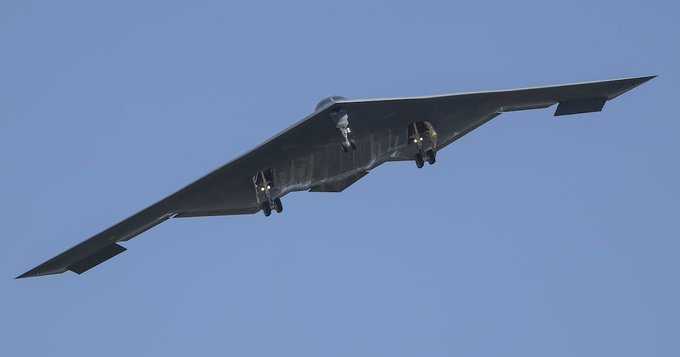
View 192 times
Global News on Umojja.com